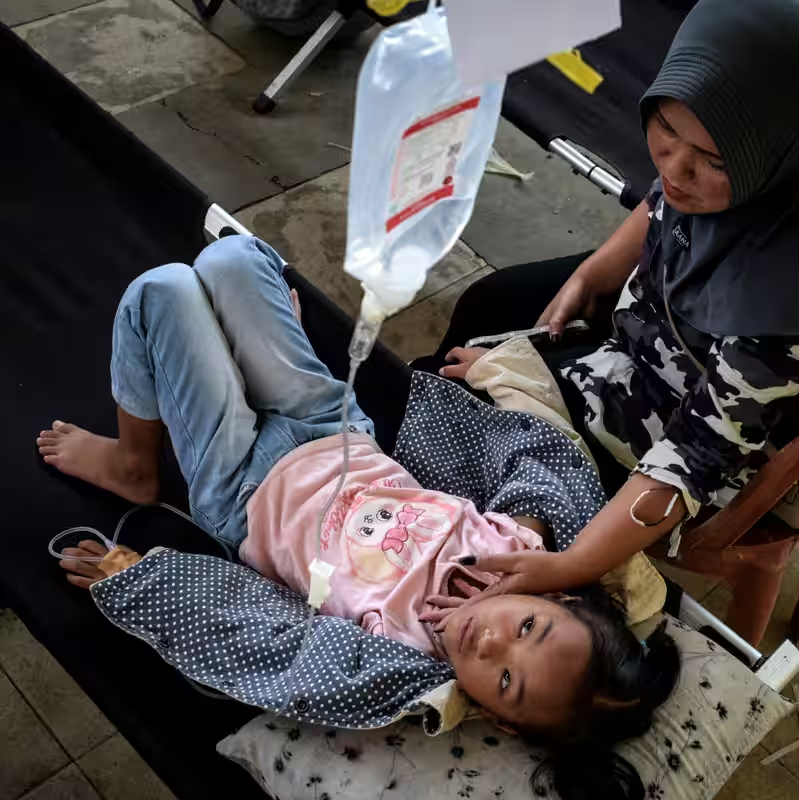Table of Contents
- Crisis Unfolds in West Java
- National Program Faces Backlash
- Presidential Defense vs Public Health Concerns
- Food Safety and Oversight Questions
- What Happens Next?
- Sources
Crisis Unfolds in West Java
In late September 2025, panic swept through the Cipongkor District of West Java, Indonesia, as more than 1,300 schoolchildren fell violently ill after consuming free lunches provided under a new national program. Among them was 17-year-old Acep Sulaeman, who collapsed while eating a meal of fried chicken, rice, lettuce, and strawberries.
His mother, Cucu Mulyati, described the harrowing scene at a makeshift clinic: “There were hundreds of sick children in there. I frantically went from stretcher to stretcher looking for him.” Acep missed nearly two weeks of school—just one of thousands affected nationwide in recent months.
Indonesia’s Free School Lunch Program Sparks National Debate
Launched in January 2025 by President Prabowo Subianto, the free school lunch program was designed to combat malnutrition and improve child health across the sprawling archipelago of over 17,000 islands. The initiative promised nutritious meals to millions of students in public schools—a noble goal in a country where food insecurity remains a persistent challenge.
However, what began as a symbol of progressive social policy has quickly turned into a public health crisis. Reports of food poisoning have surged from multiple provinces, with symptoms ranging from vomiting and diarrhea to severe dehydration requiring hospitalization.
Where Did the System Fail?
Experts point to a lack of standardized food safety protocols, inadequate training for local vendors, and minimal oversight as key factors behind the outbreaks. Unlike centralized meal programs seen in countries like Japan or Finland, Indonesia’s version relies heavily on decentralized, regional suppliers—many of whom may lack proper refrigeration, hygiene practices, or certification.
“You can’t roll out a nationwide feeding program without robust quality control,” said Dr. Lina Wijaya, a public health specialist at the University of Indonesia. “When children are your beneficiaries, the margin for error is zero.”
Presidential Defense vs Public Health Concerns
Despite mounting criticism, President Prabowo has stood by the program, touting early data that suggests improved attendance and nutrition metrics in pilot regions. “This initiative is transforming lives,” he stated during a press briefing earlier this month. “We will not let isolated incidents derail national progress.”
But critics argue these “isolated incidents” are becoming systemic. Opposition lawmakers and parent advocacy groups are now demanding an immediate pause to the program until safety audits can be conducted.
What Happens Next?
The Ministry of Education and Ministry of Health have launched a joint investigation into the Cipongkor incident and others like it. Preliminary findings suggest possible bacterial contamination—likely Salmonella or E. coli—from improperly handled poultry or produce.
In the meantime, several districts have temporarily suspended participation in the lunch program. Parents remain wary, and trust in the government’s ability to manage large-scale welfare initiatives is eroding.
Key Stats at a Glance
| Metric | Value |
|---|---|
| Children affected (Cipongkor, Sept 2025) | 1,300+ |
| National program launch date | January 2025 |
| Provinces reporting food poisoning | At least 5 (as of Oct 2025) |
| Estimated daily meals served | 8–10 million |




